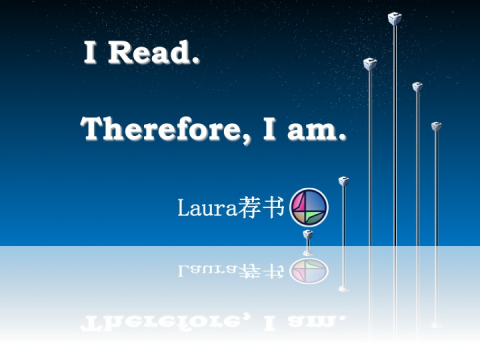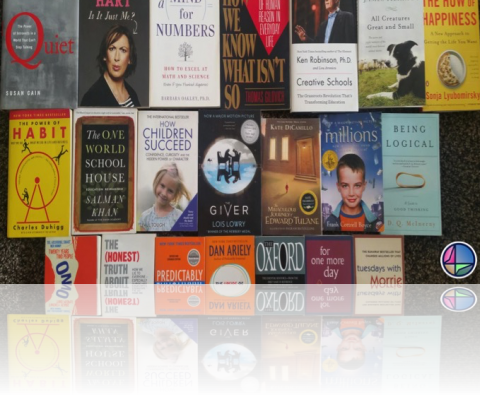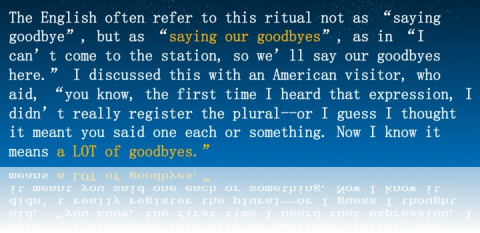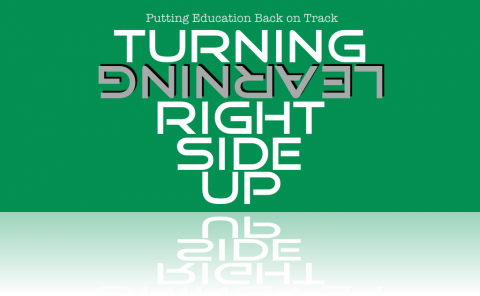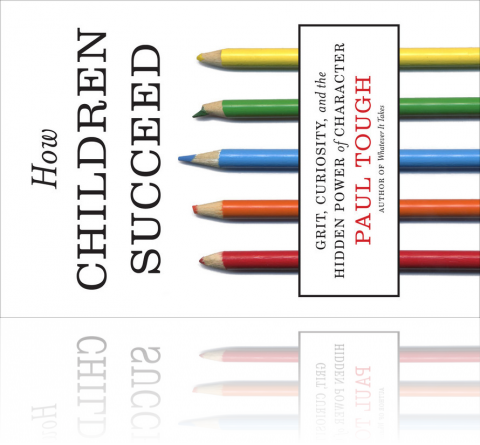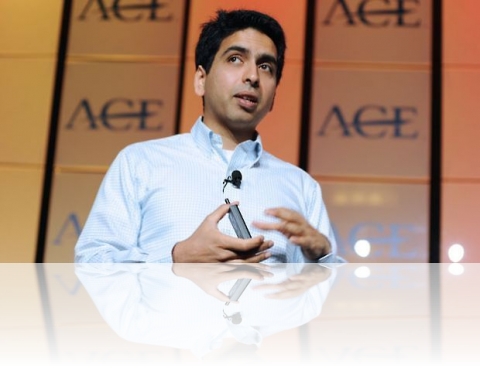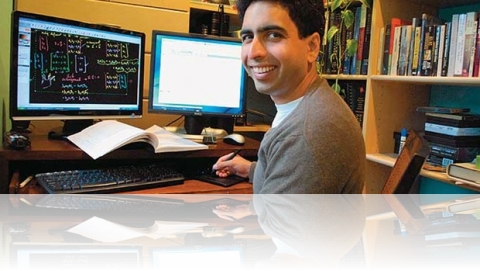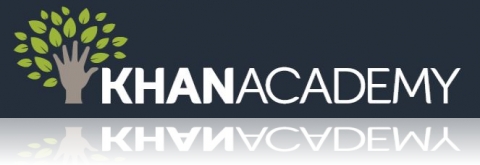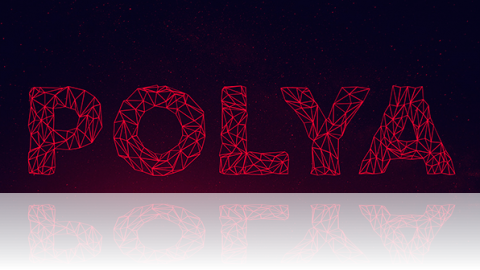I read. Therefore, I am-Laura荐书
每次讲座都不是临时起意,这次公开课准备了很久很久......
Laura荐书。既然是荐书,必须要读过相当数量。作为英语老师,有义务鼓励和带领学生阅读英文原版书籍。我是从2012年开始阅读原版书的,2014,2015年开始真正养成习惯,所以此次公开课是经过最近几年的积淀的,很是耗费心血,文字引用结合视频,信息量大,以至于讲到最后都有点疲惫。这个青年节过得很有意义。
今天讲座的题目是我读书我存在。我上大学时,教英美文学的朱源老师对我们说过,他上大学时最喜欢的两件事就是读书和思考。当时我的第一反应是,老师,你能不能别(四声)装了。世事难料,今天,我站在这里,向大家推荐英文书,鼓励大家多读书,多思考,我的心情是很复杂的。这,可能就是人生吧。
书归正传。今天讲座分为三部分:
Recommendation(推荐),Reflection(反思),Exploration(探索)。
Recommendation 1 Predicatably Irrational ( Dan Ariley)
刚才这个视频讲述的是典型的拖延症。这本书中的作者Dan Ariley18岁在一次意外中全身深度烧伤,死里逃生,但是医院里的痛苦经历反而激发他思考人的行为和心理。现在是行为经济学家,麻省理工学院的年轻教授。是行为经济学和电子商务领域中十分活跃的国际知名学者。
Dan Ariley对拖延症是这么描述的:当我们想存钱时,当我们承诺节食和体育锻炼我们情绪平静,但当我们看到一辆新车,一双新鞋时更强烈的情绪产生了:想锻炼时,却找借口在电视机前坐了一天。至于节食,还是再吃块巧克力蛋糕,明天再说吧。那么对于拖延的定义:为了当前的满足而放弃长期的目标就是拖延。
对于拖延症,Dan作了这样一个实验:Dan开设的一门课程,一共12周,需要上交三篇论文。这三篇论文的分数决定了最后的总分。
第一组:学生自己决定三篇论文上交的截止日期
第二组:论文在期末结课前上交即可,没有截止日期
第三组:dictatorial treatment 老师决定三篇论文截止日期(4,8,12周)
结果:老师设定论文截止日期的组成绩最高,没有任何截止日期的组成绩最差,学生可以自由决定截止日期的组成绩居中。
那么这个实验说明了什么呢:
首先是学生确实拖延;另外,严格限制学生的自由是解决拖延的最好方式(自上而下平均分配的截止日期)。但是更重要的事,仅仅给予学生工具和方法让他们对截止日期提前做出承诺,就可以让学生取得更好的成绩。后来经过进一步研究发现,第一组的大部分学生,截止日期设定平均,而且成绩和第三组一样好,但还是有人并没有很好的设定,还有人没有任何截止日。这些学生很大程度拉低了这组的平均分,他们的作业大都是课程结束前草草完成,成绩很低。
这说明了什么呢?有趣的是,尽管结果表明尽管几乎每个人都有拖延的问题,能够识别并承认拖延问题的学生能够更好的利用可使用的工具提前做出承诺,这样有助于克服拖延。
在Dan的另一本书The Honest Truth about Dishonesty中,提到了作弊问题。在一项实验学生被分成两组,每组学生都有很多的作弊机会,第一组学生在考试前回忆西方宗教中的十诫,第二组则考试之前回忆以前看过的书,第一组学生作弊的人数非常之低,而第二组学生则有相当一部分人作弊。那么这个实验表明It seemed that merely trying to recall moral standards was enough to improve moral behaviour. Our willingness and tendency to cheat could be diminished if we are given reminders of ethical standards. 如果我们能够得到关于道德标准的提醒,那么作弊的意愿和倾向就能够得到抑制。
基于这个研究结果,Dan在课程中让学生签署诚信守则,大大降低了作弊的几率,而这个方法也被Coursera网站采用,同学们在注册课程时也需要签诚信守则,降低作弊的几率。
Dan Ariley的三本著作都很有意思The honest Truth about Dishonesty The Upside of Irrationality 非理性的优势,这三本书讲述了人们不理性的一面,里面包括很多有趣的实验。当然大家也可以学Dan开设的Mooc课程,怪诞行为学。
Recommendation 2 The How of Happiness---Sonja Lyubomirsky
这本书是Edx网站中的一门课程The Science of Happiness推荐的阅读书目。能够增强幸福感的方法有哪些呢,书中提到了这一点。要坚持自己的目标。
书中写到,想要实现目标,就像做苦差事一样,需要付出极大努力,承受困难和压力,甚至做出个人牺牲,遭遇失败。任何技能的获得都需要大量练习,耐心和劳动。所以必须要坚持目标,而且要带着热情去坚持。
坚持目标的好处:可以增强自主意识。表面上看坚持目标好像限制了我们的自由,但对于是否坚持的选择确实自由的。遵循自己的决定朝着自己的目标努力可以帮助我们躲避某些社会压力,同时还会减少自我怀疑。当我们充满热情的全身心投入到目标和梦想,实际上我们是在主宰自己的命运,也对自己有了更好的了解。
目标的坚持当然没有那么简单,在这本书中,作者提到了这样一种方法。当我们在人前公开做出承诺时,效果往往会更好。这段文字是这样的:Scranton大学的研究表明,将自己的新年决心公开的人实现目标的可能性是不公开的人的十倍。公开自己的决心增强了我们坚持到底的可能性,部分因为我们想在自己和他人面前展示出自己的始终如一,同时也避免了尴尬。
此外,当你取得一定成功时,你会对自己的进步感到满意而欢欣鼓舞,这也更有可能带来进一步的成功。结果是螺旋式上升,正是我们所追求的。如果能够对自己取得的阶段性进步刻意进行奖励,那么也会增加成功的机会,同时提升幸福感。
在2015年1月1日,facebook创始人zuckerberg在网上公布了他的新年决心,每两周读一本书。那么刚才那句话完美的诠释了公开目标,公开梦想所带来的好处。那么我读到扎克伯格的新年决心,同时也读到了刚才那段文字,那为什么不试试呢?于是我在2015年1月4日在微博上,在教的班级里公布了我的新年决心,每月一本英文书。最后超额完成任务,一共读了21本。其实读到一半左右时,读书的习惯就已经养成了,2016年没有制定新年决心,制定了读书计划,20本。现在已经完成了11本。习惯已经养成,没有挑战性,也就不能算作新年。
Recommendation 3 Watching the English The Hidden Rules of English Behaviour--Kate Fox
P138 Rules of the Road Public transport rule: the denial rule
27’47’’--29’41 (大英烦事多视频)
为大家介绍的第三本书:观察英国人,英国人的言行潜规则
这本书中对英国人生活中的方方面面进行了细致的观察,并从人类学家的角度进行了深刻的分析。
对于英国人来说,家是最舒服的地方,那么出门在外就会带来很多不便。比如乘坐公共交通工具时,英国人有什么特点呢?
这段文字说到:英国人在乘坐公共交通工具时一个主要的应对机制:否认。否认他人的存在。我们否认自己身处陌生人群中,尽可能保证自己的私密,方法呢,就是假装别人都不存在。而且,也假装自己不存在。这个应对机制要求我们不和陌生人说话,不能有眼神接触,不承认他人的存在。同时,也避免吸引他人的注意,管好自己就行了。
作者采访一个commuter, 如果每天在站台上看到同一个人,而且火车上经常坐在对面,那么有可能在下车时跟这个人点头致意。 作者问要多久才会开始和这个人点头呢? 回答?大概一年吧。不过有些人比较外向,可能会连续几个月在车站看到你之后,开始和你点头,不过我觉得这样有些太过分,我会不舒服。
但是跟一个经常一起坐车的人友好的聊天有什么可怕呢?这个问题很愚蠢。很明显,如果和这个人聊了一次,那么以后每次遇到都要聊,承认了这个人的存在,就不能再回到过去,假装他不存在了。你们可能没有任何相似之处,那么你们的对话很可能非常尴尬了。这样的话就得想办法躲避这个人,去站台的另一头等车,躲在咖啡贩卖机后面,或者选另外一节车厢,这都是很无礼和尴尬的。整件事最后会成为一场噩梦,不敢想象。
英国人在与人打招呼,告别时也有很多问题。没有人清楚地知道该如何告别,握手握了一半,脸撞到一起,话说了一半等等。
英国人通常把告别说成“saying our goodbyes”,而不是“saying goodbye”。作者和一位美国人讨论这件事时,美国人这么说的,“我最开始听到这个表达方式,我没太明白goodbye为什么用复数,我想可能是和每个人说一句再见。现在我明白了,要说很多再见才行”。
这本书的作者是一位人类学家(anthropologist),文笔很幽默,值得一读。刚才给大家播放的视频叫做very british problems 大英烦事多,一共三集,有兴趣的同学可以看看。
Recommendation 4 Quiet: the Power of Introverts
4’07-5’59 (Ted视频)
刚才这位演讲者就是这本书的作者,书名是Quiet:the Power of Introverts 安静,内向性格的力量。
作者认为内向性格,(包括敏感,严肃,害羞等特点)现在被人看做是二等性格,往往代表着失望和病态。外向性格是很具吸引力的性格,但是现在社会趋势是过分推崇外向性格,仿佛这才是正确的性格标准,每个人都应该遵守。
内向的人更受内在感受和想法的吸引,外向的人更关注人和活动的外在生活。内向的人关注周围发生的事所带来的意义,外向的人则直接投入到这些事情中。内向的人通过独处为自己充电,外向的人社交活动过少时才需要充电。
内向的人在创新能力上有一个不太明显但却十分有利的优势:内向的人倾向于独立工作,独处是创新的催化剂。
独处有什么魔力呢?在很多领域里,只有独处时才能进行刻意训练,这是取得成就的关键。当你刻意训练时,你能识别出哪些任务和知识超出你的能力,努力提高自己水平,检测自己的进步并进行相应改进。
佛罗里达大学教授 K•安德斯•埃里克森(K. Anders Ericsson)提出了一万小时法则。他认为想在某个领域取得杰出的成就,至少进行一万小时的刻意训练。
刻意训练最适合一个人进行的,原因如下:首先,需要高度集中注意力,其他人的存在会分散注意力。第二,刻意训练需要有深层的动机,往往是内在动机。但最重要的是,刻意训练主要进行的是对个体而言最具挑战性的工作,只有一个人独处时,才能直接进行最难,最具挑战性的工作。如果你想把这件事做得更好,你必须是行动的发起者。
既然独处这么重要,书中提到对于有天赋并有内在动力的那些人来说,想要提高他们的创造力或效率的话,应该鼓励他们独立工作。那么,我们平时经常做的小组头脑风暴有什么问题呢?
心理学家认为小组头脑风暴往往会失败有以下三点原因:1social loafing 社会惰化效应;在一个小组中,总是有人偷懒,不干活或少干活;2. Production blocking 生产阻碍。当一个人在组内发言时,其他人被迫被动坐着倾听,自己的想法收到阻碍。3. Evaluation apprehension 评价恐惧;评价焦虑;谁也不想在自己同伴面前显得很愚蠢的样子,还是不说好了。
那么为什么网络上的小组合作头脑风暴效果要好于实际中的头脑风暴呢?因为大家在网络上与他人分享自己见解之前,已经进行了独自的思考,所以本质上还是独立的行为。
那么对于我们平时有什么指导意义呢?大家先各自进行独立思考,捋顺自己的想法之后,再彼此分享就好了。
在读完这本书之后,我们对两种性格会有一个很深刻的理解,也能根据自己的性格更好的发挥自己的优势和特点。
除了以上这四本书呢,喜欢写作的同学可以看
The Oxford Essential Guide to Writing和on Writing Well.不论是高考写作还是平时的作文,出国作文,这两本书都值得推荐。
喜欢逻辑喜欢思维的同学可以看Being Logical; The Art of Thinking Clearly
Being logical薄薄的一本书,最平实简洁的语言告诉我们什么是正确的逻辑,平时思维中的谬误。The Art of Thinking Clearly一共30章,每章3页左右,每一章包括一个思维中经常犯的错误,那么的出来什么结论,如何指导实践。
Is it just me?这本书作者是英国喜剧演员Miranda Hart,她有一米八高,外表很普通,她是英国非常著名的喜剧演员,有自己的情景喜剧,她本身就是编剧导演加主演。这个胖胖的,其貌不扬却又才华横溢的演员对生活有着怎么样的观察和见解呢?这本书推荐给大家。
我读书比较喜欢心理学,教育类,写作类书籍,但是因为上学期开始在自己的班级中搞literature circle,需要带着学生一起读英文小说,于是开始有针对性的读一些小说,One Day是我很喜欢的一本,有同名电影,海瑟薇主演。我这个人有一个原则,no one has the right to upset me except myself. 除了我自己没有人有资格影响我的情绪。这本书读着读着,突然发现自己心情不好,原来是被故事情节影响了。于是我体会到了小说的力量。这一本呢the Gone Girl消失的爱人,也有同名电影。本阿弗莱克主演。我在几年前看这部电影时,被天蝎座女人的恶毒和高智商犯罪而震撼,今年年初读了这本书,体会到小说中很多精彩之处,电影是无法呈现的。
当然,万事开头难,为大家推荐两本入门级英文读物。Flora & Ulysses这本书上个周日收到,三个小时一口气读完,这是能让人一口气读完并且时不时真的会笑出声来的故事。Anastatis Krupnik也是获得Newberry儿童文学奖的作品,天真可爱的小女孩生活中的点滴,迷惘,甜蜜和苦涩。
那么第一部分荐书到此为止,带来哪些思考呢?
Reflection 1 Input VS Output
首先,输入和输出。
前一段很多育才老师在朋友圈转发10级英语班学生金延峰申请美国大学时的文章,登上了纽约时报,无论中文还是英文都让人为之赞叹。这个学生高一时曾经问我说,老师我到外面和别人交流,我的口语很流利,就是不知道和他们说些什么?我回答说,那肚子里没有东西当然没什么可说的。上届毕业生问我怎么样提高口语,我说其实大家的语法并不太差,词汇量也可以,主要问题还是要有内容可说,永远要content over form,内容大于形式。不如读英文书,既提高词汇量,也有知识和信息上的输入,懂的东西多了,也就有话说了。
Reflection 2 Reading VS Thinking
第二,读书与思考。思考是一种习惯,是一种必备技能,是可以习得的。不会思考可以学,读书时能够感受作者的观点,观察作者怎么分析问题,怎样得出结论,怎样说服别人。
在How To Read a Book一书中,有这样一段文字:
If you ask a living teacher a question, he will probably answer you. If you are puzzled by what he says, you can save yourself the trouble of thinking by asking him what he means. If, however, you ask a book a question, you must answer it yourself. In this respect a book is like nature or the world. When you question it, it answers you only to the extent that you do the work of thinking and analysis yourself.
如果你问老师一个问题,他很可能会回答你。如果你仍然不理解他的话,你可以继续问,这样就省去自己思考的麻烦。但是如果你对一本书有问题,你必须自己回答。这样书就像大自然或者世界。当你有问题时,书给你的回答的程度取决于你自己思考和分析的程度。
Why is marking a book indispensable to reading it? First, it keeps you awake--not merely conscious, but wide awake. Second, reading, if it is active, is thinking, and thinking tends to express itself in words, spoken or written. The person who says he knows what he thinks but cannot express it usually does not know what he thinks. Third, writing your reactions down helps you to remember the thoughts of the author.
Marking a book is literally an expression of your differences or your agreements with the author. It is the highest respect you can pay him.
为什么读书时一定要在书上写写画画呢?首先,让你保持清醒,不仅是意识清醒,而是完全清醒状态。第二,阅读,如果是积极阅读的话,就是思考,思考相当于用文字(口头或笔头)表达。有些人说知道自己的想法但却无法表达,实际上意味着他根本不清楚自己想法。第三,写下自己对书的砍伐有助于记住作者的观点。所以,阅读时做标记就是将你和作者观点的异同进行表述,这是你能给予作者的最大的尊重。
Reflection 3 Cognition VS Meta-cognition
认知与元认知
读书必然导致认知能力的提高,那么元认知是什么呢?在How children succeed这本书中提到认知行为疗法是心理学中所说的元认知的一个例子。Metacognition, thinking about thinking. 对认知的认知。具体地说,是关于个人自己认知过程的知识和调节这些过程的能力:对思维和学习活动的知识和控制。
人们设定目标时有三种策略,其中两种不太有效。乐观主义者喜欢沉溺于想象。他们想象未来可能获得哪些成就,生动的设想成功所带来的一切好处--美誉,自我满足,未来的成功。这种方式感觉很好,因为能刺激多巴胺的增加,但和实际的成就并不关联。
悲观主义者的策略是悲观思量。他们会仔细想通往成功路上的障碍。这与成就也没有关联。
第三种策略是心理对照。既关注积极的结果也关注可能的困难,这就使未来和现实之间产生了强烈的关联,提示了自己为达到目标,克服困难的必要性。下一步就是一系列的实施意向---以“如果。。那么。。”的形式把困难与方法联系起来详细计划。比如,“如果放学后被电视吸引,那么我会等写完作业后看电视”
MCII要说的是为自己制定规则。如果你为自己制定规则,那么你的前额叶皮层成为了你的合作伙伴,和你一起对抗大脑中由欲望和反射驱使的那部分。通过给自己制定规则,你可以回避内心渴望和坚定决心之间的冲突。规则带来结构,使我们做好准备,更好的面对那些诱人的刺激,把注意力重新关注在其他地方。不久,规则就会变成自动的习惯。
所以我们平时做事情时要经常跳出来想一想,step back and look at the big picture. Jump out and reflect. 不仅要投入做事,更要做事后对这个过程进行反思,将自己在过程中的每一步的决定,表现仔细分析,剖析自我,完成认知和元认知两个过程。
Recommendation 4 Fragmentation VS Systematization
碎片化与体系化
如果大家注意到的话,刚才我推荐的4本书,都是以碎片化信息的形式,以视频的形式来引起大家的兴趣,继而对书进行进一步的介绍的。现在这个时代每天充斥着大量的碎片化信息,之所以称之为碎片化,因为信息量少,短时间内吸收理解,同时也能引起我们的兴趣。但要注意的是碎片化信息的内容远远不够,刚才quiet那本书,作者花了7年时间完成,所以书永远是更成体系的,是学者,作者,专家多年的研究成果和心血,如果我们能够仔细研读quiet这本书的话,相当于心理学专业人士对我们面授知识,这绝对是碎片化信息做不到的。
第二呢,不要停留和满足于碎片化信息。我们在接收到此类信息后一定要更进一步,go one step further. 不能说看了一个TED演讲,就有资格说ted演讲我知道,专业人士对自己研究成果做成15分钟左右的演讲。大家都看过,你看过不代表ted演讲就是你的了。还有这几年流行的MOOC,以前大家可能不熟悉,现在问的话,会有很多人说我知道MOOC,大型网络公开课程。哇,同学你心里应该很骄傲吧。首先,态度要谦逊。其次,你有没有真正参与过MOOC学习,学习过几门,心路历程有没有总结过,MOOC的特点,操作方式是否了解,当你能给出肯定的答案时你才有资格说,MOOC我有一定了解的。所以一定要记住,知道了一个新名词,不代表这个名词就是你的了,没有体验过,没有经历过,这个名词跟你还是没有任何关系,只有亲身体验这个过程才有资格发表自己的一点点看法。
所以,我们要抓住碎片化信息时效性上的优势,跟上这个时代,但是决不能停留在表面,系统性的成体系的知识存活的更久远。
Reflection 5 Impulse VS Habit
冲动与习惯
那么有的同学可能听完今天的讲座后呢,跃跃欲试,我也要去买英文书,一下买来10本,结果读了两页就放弃了。三分钟热度很正常,我们首先要承认这一点,一下买10本呢,毕竟英文书也挺贵的,买了那么多本花了那么多钱,不读又说不过去,当然如果有同学真的一下买了10本可以先寄存在我这里。
我想说的是什么呢,首先很多事都是因为冲动才开始的,这很正常。但怎样才能把这种冲动这种热情保持下去呢?刚才在quiet这本书中提到了deliberate practice刻意训练,很多技能经过刻意训练是完全可以提高的,那么我们怎么养成读书的习惯呢?
在power of habit 这本书中关于习惯是这么写的: 习惯之所以出现,是因为大脑一直在寻找可以省力的方式。
这个过程是一个由三步组成的循环。Cue(诱因)——→Routine(惯例)——→Reward(回报)。看到诱因之后,我们就会进入到自动行为模式,模式结束后得到回报和奖励,加强我们对再次得到奖励的渴求,于是造成下一次看到提示诱因时,更自然地进入自主行为模式,这样习惯就形成了。一旦习惯形成,在下一次做同样事情时,大脑就不需要做任何决定,把脑力转移到其他事情上去了。这个事情也不具有任何挑战性了,已经成为习惯了。
我们还可以应用刚才提到的第三点元认知里面说的心里对照策略。那么我们可以先想象积极的结果:如果我读英文书的话英文能力很强,知识输入大大增加,视野和世界观,分析能力,表达能力都会有逐步提高,而且还可以跟同学吹牛。
那么有可能遇到什么问题呢?1. 生词多 2 坚持不下去 3 没时间读
那么针对这些问题可以如何解决呢?生词多,可以从简单的书开始,可以读完一章查一查单词,或者就干脆不查,毅力问题,可以制定读书时间表,减少刷微博时间,每天抽出20分钟,公开自己读书的决心,定期给自己奖励。
所以我们这是在干什么呢?我们是在用读书指导读书,用知识指导实践,这就是知识的内化internalize
Reflection 6 Books VS Films
书籍与电影
How to read a book
We moderns are inundated with facts to the detriment of understanding.
The very media are so designed to make thinking seem unnecessary. The packaging of intellectual positions and views is one of the most active enterprises of some of the best minds of our day. The viewer of television, the listener or radio, the reader of magazines, is presented with a whole complex of elements---all the way from ingenious rhetoric to carefully selected data and statistics---to make it easy for him to “make up his own mind” with the minimum of difficulty and effort. But the packaging is often done so effectively that the viewers, listeners, or reader does not make up his own mind at all. Instead, he inserts a packaged opinion into his mind, somewhat like inserting a cassette into a cassette player. He then pushes a button and “plays back” the opinion whenever it seems appropriate to do so. He has performed acceptably without having had to think.
我们现代人已经被各种事实淹没,损害了我们的理解能力。
媒体的设计使得我们的思考变得没有任何必要。电视观众,广播听众,杂志读者接收到一整套的信息,从华丽辞藻到精心挑选的数据,让他们轻松做出所谓的自己的决定。但实际上这些打包的信息太有效了,完全不需要观众们做出任何决定。实际上观众就是把这些打包的信息插入大脑,就像把磁带放到录音机一样。已经不需要思考而全盘接受了。
Reflection 7 读书遇到不懂的地方怎么办
How to read a book
In tackling a difficult book for the first time, read it through without ever stopping to look up or ponder the things you do not understand right away.
Pay attention to what you can understand and do not be stopped by what you cannot immediately grasp. Go right on reading past the point where you have difficulties in understanding, and you will soon come to the things you do understand.
What you understand by reading the book through to the end---even if it is only fifty percent or less---will help you when you make the additional effort later to go back to the places you passed by on your first reading. And even if you never go back, understanding half of a really tough book is much better than not understanding it at all.
If you insist on understanding everything on every page before you go on to the next, you will not get very far.. In your effort to master the fine points, you will miss the big points. You will miss the forest for the trees. You will not be reading well on any level.
读一本有难度的书,最好的办法从头读到尾,即使有不懂的地方,也不做任何停留。
关注能看懂的地方,遇到难处继续往下读。
即使只能读懂书的一半内容甚至更少,在你读第二遍时这都有助于你的理解。即使只读一次,读懂一半总比一点不懂要好。
如果你坚持把每一页每个词都弄懂,应该不会走的太远,而且会错过重点。不要因为几棵树而错过整个森林。
Explorationp: Where to find the books
TED MOOC Social Media Films Amazon Interest
TED、MOOC推荐教材、微博文章引用书籍、定期Amazon推荐...
如果知道自己的兴趣,直接英文关键词搜索。或者搜索该领域最著名最专业人士的著作。每个人都应该有自己的书单,最初可以源于别人的推荐,但慢慢要自己形成,学会自己找书读。
最后:英文书一定要读的,今天已经介绍了不同书目,也介绍了读书的好处,思考习惯的养成,信息知识输入,自我认知和系统化学习以及如何养成读书的习惯,怎样找到好书。如果大家能够利用这次讲座点燃的一点点热情,投入一点点努力把读书变成生活中不可或缺的一部分,我想不久的将来,你们也会觉得,读书和思考确实能带来快乐了。
好,谢谢大家。
附上PDF文件:laura荐书
